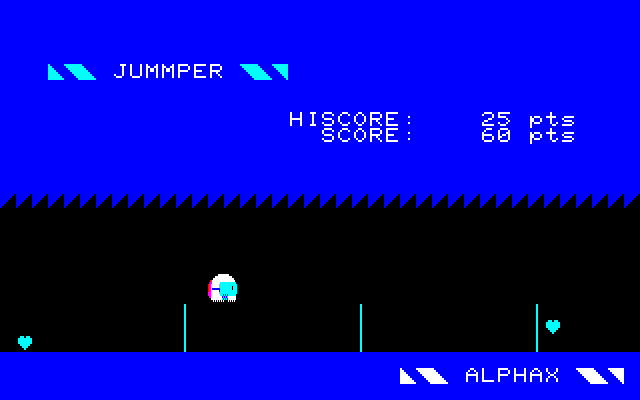Features on endless runners
This is a great topic to look into! The endless runner genre has been relatively neglected by games criticism, as part of our general struggle to adapt our ways of reading games to mobile and casual games. But it’s not a complete desert out there, and there’s some work that’s been done that makes a great starting point.
- What I talk about when I talk about endless running | ZAM
Joel MacGregor’s piece from earlier this year includes some aesthetic observations about the nature of the endless runner, and also points us to SkiFree and SFCave as examples of very early endless games.
“This is the final lesson we can learn from endless runners. When they embrace the 2D origins of games they remind us of the sense of discovery and surprise as simple a thing as sprinting across a changing landscape can create, never able to fill all the blanks in our internal maps but slowly coming to understand the threats that inhabit them.”
- Don’t Stop: The Game That Conquered Smartphones – The New Yorker
Simon Parkin put together a pretty comprehensive feature on early endless runner developers in June of 2013, which includes some notes on precursors.
“‘Two months after Canabalt’s release, I remembered an old DOS game. You had to fly a helicopter down a tunnel, avoiding obstacles in order to see how far you could go.’ Saltsman wasn’t the only one probing his memory for Canabalt’s predecessors. As Wikipedia’s volunteer contributors tried to pin down the origins of the endless runner, discussion turned to a 1983 Commodore 64 game, B.C.’s Quest for Tires.”
- C64 Longplay – BC Quest For Tires – YouTube
Note that this let’s play video, as well as some further interview quotes from Parkin’s article, seem to suggest that there was an end to Quest for Tires – you get to the woman-as-reward, cease your stone-age unicyling, and she blows you a kiss.
Originators and exemplars
Looking a little more into some of the early games mentioned in the pieces above and on other blogs we follow at Critical Distance, these three stand out in particular:
Jumper (1986)
- lunatic obscurity: 100 Yen Disk No. 1 (PC88)
Lunatic Obscurity might have found the earliest endless runner in passing when trying out a 1986 100 Yen disc for the PC88 – a mini game called Jumper.
“Next is another game, Jumper, which must be one of the earliest examples of an endless runner. You play as a white blob thing that has to jump over a series of walls without crashing into the low, spike-covered ceiling. That’s it pretty much.”
Skifree (1991)
Skiing isn’t running, but it’s perhaps not surprising that a precursor to the endless runner can be found in an endless skiing game, since skiing is really about an unstoppable descent powered by the neverending force of gravity (I don’t ski though so don’t take my word for it).
- Retro: Skifree | Rock, Paper, Shotgun
In 2009, Alec Meer wrote on Rock Paper Shotgun about the early 1990s Windows game Skifree, reading into its endlessness a kind of nihilistic drive to move onwards forever until death brings your journey to an end. - The Most Officialest SkiFree Home Page
SkiFree developer Chris Pirih recreated the game for 32-bit Windows architectures in 2005, noting the history of the game from his own perspective and acknowledging prior origins: a game for VT100 terminals, and before that, an Activision game for the Atari 2600.
“In 1991 I was working at Microsoft as a programmer […] (Windows 3.0 had just come out) I jumped right in and did a graphical version of my old VAX/VMS skiing game for VT100 terminals. […] VAX Ski was itself inspired by an Activision game for the Atari 2600 console, which I enjoyed playing in my youth. I remember very little of the Activision game, but I think it looked pretty much like SkiFree.”
- AtariAge – Atari 2600 – Skiing (Activision)
Note that it doesn’t seem like the Activision skiing game was endless, instead focusing on time-trial slaloms down a mountain. Similarly to the Quest for Tires inspiration for Canabalt, there’s an aesthetic translation here from a game with a goal at the end to an endless game.
SFCave (1995)
The procedural generation, speed, and gravity in SFCave are remarkably similar to the 2012 hit endless runner Jetpack Joyride, while the focus on avoiding obstacles rather than gathering coins gives it a Flappy Bird feel.
- SFCave : Yohei Iwasaki : Free Download & Streaming : Internet Archive
Archive.org dates SFCave back to a 1995 version for Windows 3.1.
Other things to search for
Finally, you might also want to check out our archives for material on the following:
- [search]Flappy Bird[/search]
- [search]Adam Saltsman[/search]
- [search]Super Hexagon[/search]
This post is part of a new series that we’re calling ‘Agony Auncle’ – it’s like an advice column, where you get to ask for help with critical games writing. Got a question for Critical Distance? Want advice with a games criticism problem, or help finding resources? Get in touch.


